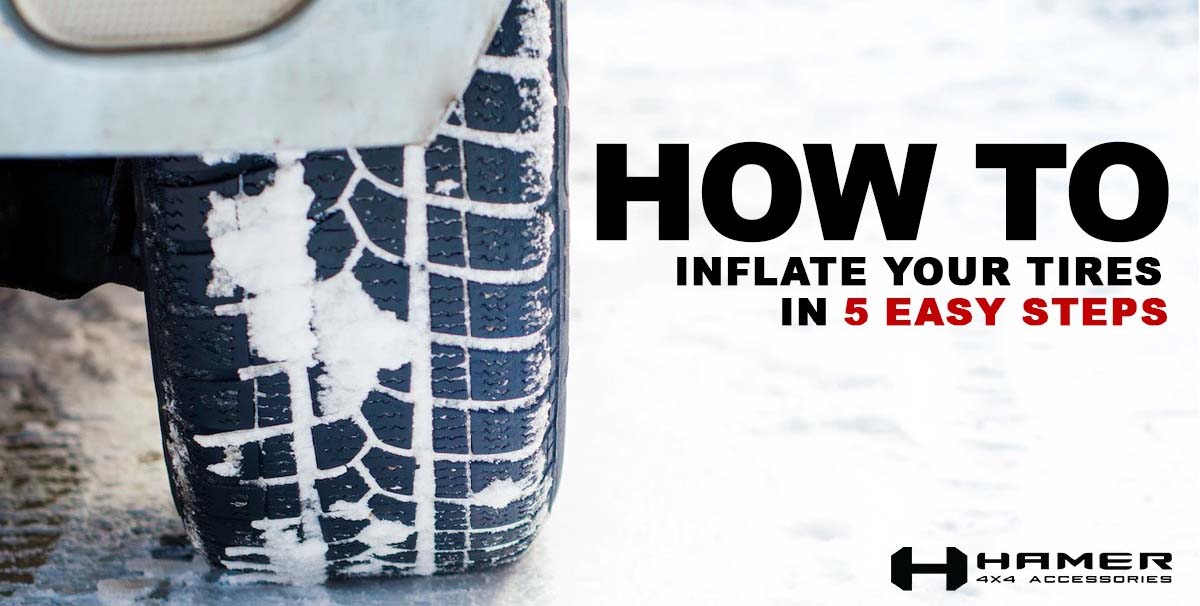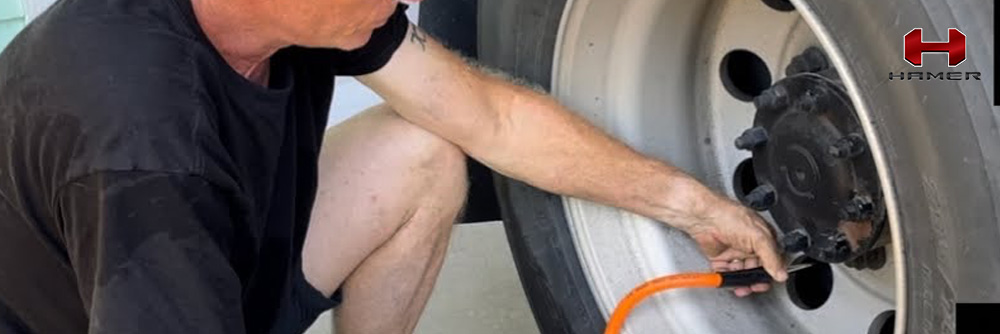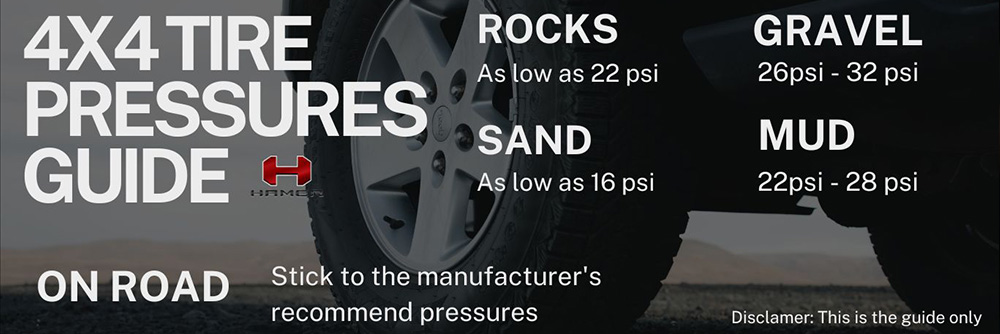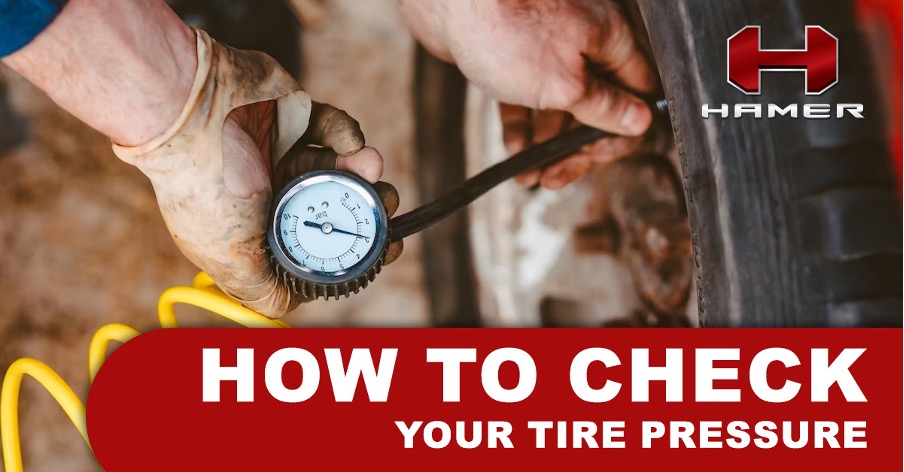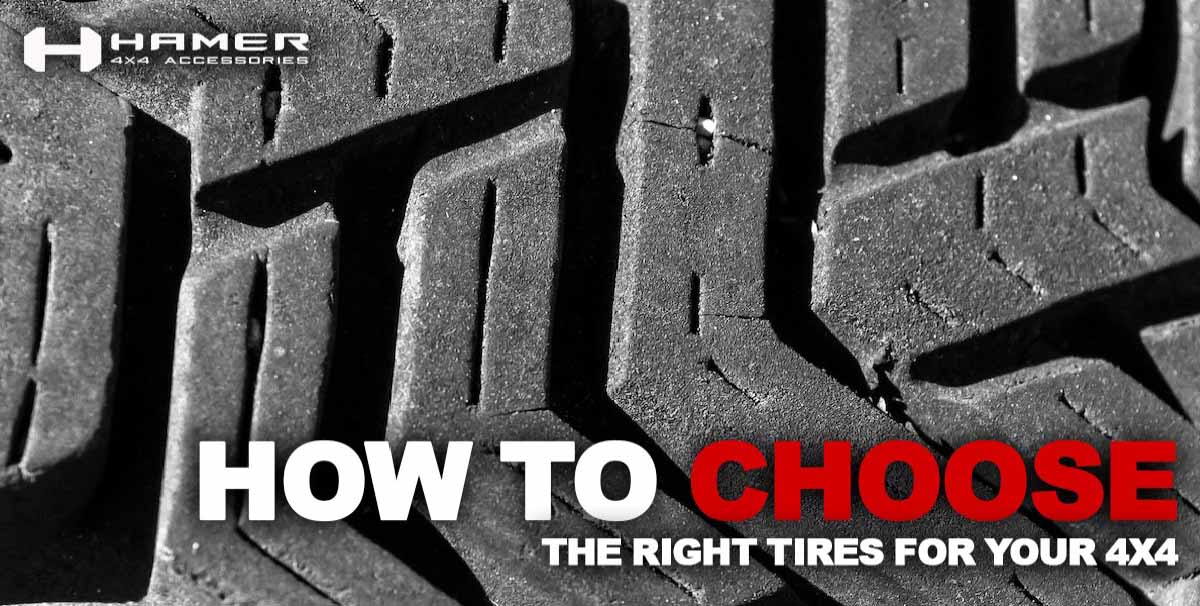NEWS & ACTIVITY
How to Inflate Your Tires in 5 Easy Steps
Keeping your 4WD tires inflated to the correct pressure can be the difference between a comfortable ride on the freeway and a day spent stranded in the middle of nowhere. It’s important to check your tire pressure often, especially before going on a long trip or driving in off-road conditions.
Inflating your 4WD tires is a simple task that can be done in just a few minutes. All you need is a tire-pressure gauge and an air compressor. Follow these five easy steps and you’ll be able to take on the road in no time!
Why Is It Important To Inflate Your 4WD Tires?
Inflating your 4WD tires correctly is essential for several reasons. Firstly, correctly inflated tires help you stay in control of the vehicle and keep your car running at its optimal output. Properly inflated tires help to maintain a safe and appropriate contact between tires and the road, giving your 4WD the traction it needs to function, especially in off-road conditions. Incorrectly inflated tires will overheat and could lead to an unexpected tire blowout.
Secondly, correctly inflated tires help you conserve fuel. Tires with the correct pressure will increase the fuel efficiency of your vehicle by reducing the rolling resistance of your tires, meaning you can go further without having to refuel. Another important benefit is that correctly inflated tires will help to lower CO2 emissions, which has positive environmental influence.
What Are The Consequences Of Not Inflating Your Tires?
The consequences of not inflating your 4WD tire to the correct pressure can be severe. Under-inflated tires are likely to overheat and blowout which can be a dangerous situation for you and other drivers on the road. Under-inflated tires will wear out more quickly since tires become softer and flatten when not filled with the correct PSI for your vehicle. This causes more wear and tear on the 4WD tires and over time can cause damage to the tires.
Additionally, under-inflated tires will increase the fuel consumption of your 4WD. Under-inflated tires are likely to have increased rolling resistance, which means the engine must work harder and use more fuel to overcome the extra friction. This means you will save money in the long run by having correctly inflated tires. Not only that, but you reduce your vehicle’s contribution to greenhouse gases.
The 5 Easy Steps To Inflating Your Car Tires
Step 1: Park Your Vehicle on Level Ground
The first step in inflating your 4WD tires is to park your vehicle on a level surface. This is to ensure that the pressure readings from your pressure gauge are accurate. The pressure readings could be inaccurate if you are on a sloped surface, so it is essential to find a level spot. Parking your vehicle in well ventilated and shaded area is also important as this will help to keep the temperature of the 4WD tires consistently cool.
Step 2: Loosen the Lug Nuts
Once your 4WD is parked in the right spot, you’ll need to locate the lug nuts on the tire and loosen them. Make sure to only unscrew the lug nuts slightly so that it’s much easier to tighten them back up with a wrench or a tire iron. It’s important to not unscrew the lug nuts all the way as this could cause a leak of air from the 4WD tire.
Step 3: Remove the Wheel Cover
Now that the lug nuts are loosened, you can remove the wheel cover. This is to make sure there is a tight seal between the tire and the tire valve stem. Taking off the wheel cover is usually a simple process and all you need is a screwdriver. Be careful when removing the wheel cover in case any of the screws are tight as this can cause you to strip the screw head.
Step 4: Check the Tire Pressure
This is when you will need the tire pressure gauge. To check the tire pressure, attach the gauge to the tire valve stem and ensure there is a tight seal. This is to ensure the pressure readings are accurate. Make sure to get a tire-pressure gauge that is suitable for your 4WD’s valve stem. After this you can take the tire-pressure reading of your 4WD tires.
Step 5: Inflate the Tire to the Recommended Pounds per Square Inch (PSI)
Now that you have the tire pressure reading, you can decide whether to inflate or deflate. If the readings are lower than what is recommended for your 4WD tires, you will need to inflate the tires. To do this, attach the air compressor to the tire valve stem and slowly inflate the tires. Make sure to check the tire-pressure reading often and stop when you reach the recommended PSI for your 4WD tires.
Conclusion
Inflating your car tires correctly is a simple process and only requires a few tools. The process takes only a few minutes, and the benefits are well worth it. Correctly inflated tires will help you save fuel and help to reduce emissions, but most importantly it will keep you and other drivers safe. We recommend you install Hamer tire carrier for effective storing of your spare tire in case the situation calls for it. Have fun, drive safe and follow us on Facebook to get our latest news and promotions at: Hamer4x4.



































































































